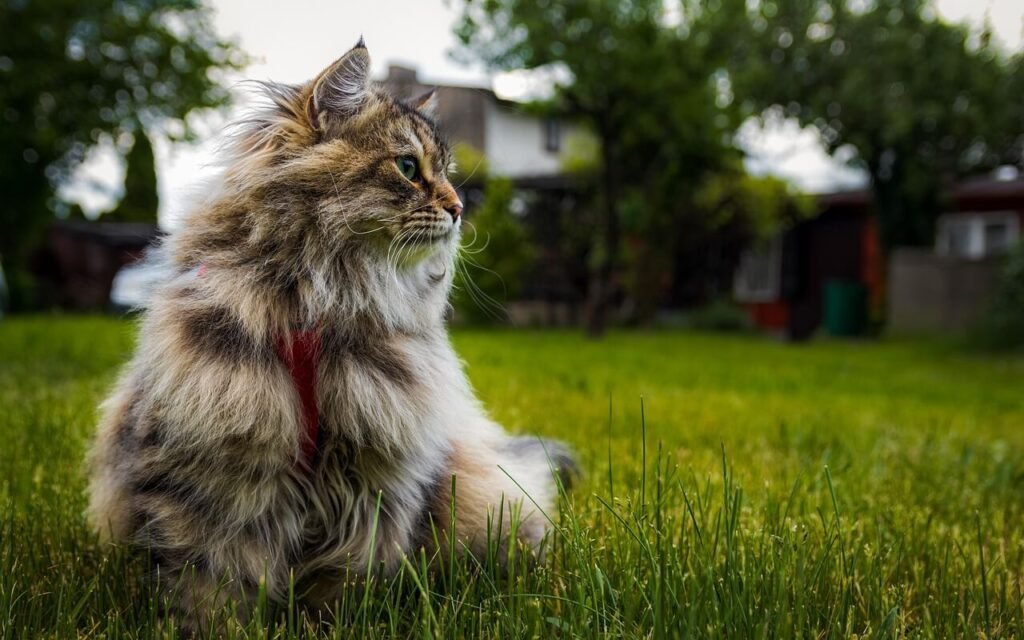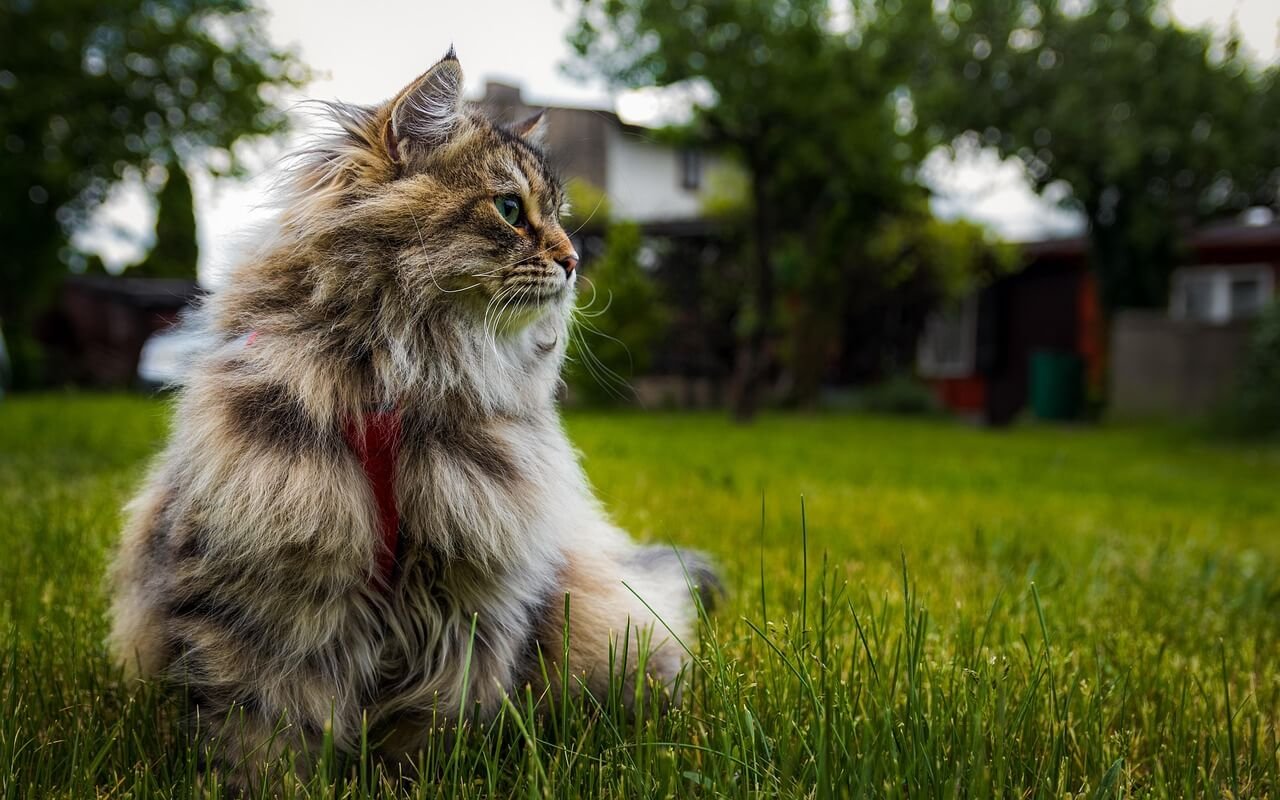Do Cats Think? Unraveling the Mysteries of Feline Cognition
Cats are enigmatic creatures, often leaving us wondering what goes on in their minds. From their quirky behaviors to their seemingly independent nature, it’s natural to question whether cats truly “think” and, if so, how their thought processes work. While they may not ponder life’s big questions like humans do, cats are far from simple automatons. Their mental abilities are complex, shaped by instincts, experiences, and even emotions. In this article, we’ll explore the fascinating world of feline cognition, shedding light on how cats perceive their environment, solve problems, and interact with the world around them.
The Inner Workings of a Cat’s Mind
Cats process information in ways that are both instinctual and learned. Their brains are wired to prioritize survival, but they also exhibit behaviors that suggest higher cognitive functions. Here’s a closer look at how cats think and interpret the world:
Instinctual Drives :
Cats rely heavily on instincts for hunting, territorial defense, and social interactions.Problem-Solving Skills :
Studies have shown that cats can solve puzzles to access food or toys, demonstrating logical thinking.Memory Retention :
Cats have excellent short-term and long-term memory, allowing them to remember people, places, and routines.Emotional Awareness :
Cats can recognize and respond to human emotions, such as happiness or distress, often offering comfort.Spatial Awareness :
Their keen sense of spatial relationships helps them navigate environments with precision.
Understanding these aspects of feline cognition reveals that cats are more than just instinct-driven animals—they possess a surprising level of mental sophistication. This blend of instinct and intellect makes them uniquely fascinating companions.
Behavioral Clues: Evidence of Thought Processes in Cats
While cats may not verbalize their thoughts, their actions often speak volumes about their cognitive abilities. Observing your cat’s behavior can provide insights into how they think and make decisions.
Curiosity About New Objects :
Cats investigate unfamiliar items, showing curiosity and a desire to understand their surroundings.Learning Through Observation :
They mimic behaviors, such as opening doors or using litter boxes, after watching others.Adapting to Changes :
Cats adjust their routines when their environment shifts, indicating adaptability and reasoning.Hunting Strategies :
Even indoor cats display stalking and pouncing behaviors, reflecting planned actions.Expressing Preferences :
Cats show likes and dislikes through their choices, such as favoring certain toys or sleeping spots.
These behaviors highlight the depth of thought behind a cat’s actions. Whether solving problems or expressing preferences, cats demonstrate a level of awareness that goes beyond mere instinct.
Check this guide 👉Do Cats See Color? Best 7 Expert Tips!
Check this guide 👉Why Do Cats Lick Their Paws? Best 7 Behavior Tips!
Check this guide 👉Why Do Cats Make Air Biscuits? Best 7 Tips!

Feline Cognitive Abilities | Examples of Behavior |
|---|---|
Problem-solving | Figuring out how to open cabinets |
Memory retention | Remembering feeding times or familiar faces |
Emotional intelligence | Responding to owner’s mood or stress |
Spatial awareness | Navigating obstacles or jumping precisely |
Learning through observation | Copying another pet’s actions |
How Do Cats’ Thoughts Differ from Ours?
While humans and cats share some cognitive traits, there are significant differences in how we process information. Understanding these distinctions can help deepen our appreciation for feline cognition.
Focus on Survival :
Unlike humans, cats prioritize survival-related thoughts over abstract concepts.Short Attention Spans :
Cats tend to focus intensely on one task at a time rather than multitasking.Limited Abstract Thinking :
Cats don’t engage in philosophical musings or imagine hypothetical scenarios.Strong Sensory Reliance :
Their thoughts are heavily influenced by sensory input like smell, sight, and sound.Independent Decision-Making :
Cats act autonomously, rarely seeking validation or guidance from others.
These differences remind us that while cats may not “think” in the same way humans do, their unique perspective is equally valuable and intriguing.
Tips to Keep Your Cat’s Mind Sharp
Mental stimulation is crucial for keeping your cat happy and healthy. Engaging their mind not only prevents boredom but also strengthens their cognitive abilities.
Interactive Toys :
Toys that require problem-solving, like treat puzzles, challenge your cat’s brain.Rotating Toys :
Regularly switch out toys to keep things fresh and exciting.Training Sessions :
Teach tricks or commands using positive reinforcement to stimulate learning.Exploration Opportunities :
Create safe spaces for climbing, hiding, and exploring to encourage curiosity.Social Interaction :
Spend quality time playing or cuddling to strengthen your bond and engage their mind.
By incorporating these activities into your cat’s routine, you can nurture their cognitive health and enrich their daily life.
How Cats Display Emotional Awareness
Cats are often underestimated when it comes to emotional intelligence, but their behaviors reveal a surprising depth of understanding. They are highly attuned to the emotions of those around them, including their human companions. Here’s how cats demonstrate emotional awareness:
Comforting Their Owners :
Cats often seek out their owners when they’re upset, offering physical closeness as a form of comfort.Reacting to Tone of Voice :
A cat can distinguish between different tones and may respond accordingly, such as perking up or retreating.Recognizing Familiar Faces :
Cats show affection and familiarity toward people they trust, often greeting them warmly.Expressing Empathy :
Some cats display behaviors that suggest empathy, like staying close to a sick or grieving owner.Avoiding Conflict :
Cats often retreat from tense situations, showing an ability to sense and avoid stress.
These behaviors highlight the emotional depth of cats, proving they are more in tune with their surroundings than many realize. By recognizing these signs, we can better appreciate the bond we share with our feline friends.
Decoding Feline Communication
While cats can’t speak, they communicate their thoughts and feelings through a variety of signals. Understanding these cues can help you interpret what your cat is trying to convey.
Vocalizations :
Meows, purrs, and hisses each carry different meanings, from seeking attention to expressing discomfort.Body Language :
Tail positions, ear movements, and posture reveal a cat’s mood and intentions.Facial Expressions :
Subtle changes in a cat’s eyes or mouth can indicate curiosity, relaxation, or fear.Scent Marking :
Rubbing against objects or people is a way for cats to claim ownership and communicate familiarity.Behavioral Patterns :
Changes in eating, sleeping, or grooming habits can signal shifts in thought or health.
By paying attention to these communication methods, you can gain deeper insights into your cat’s mind. This understanding fosters a stronger connection and ensures their needs are met.
How Play Stimulates a Cat’s Mind
Playtime isn’t just about fun for cats—it’s also a critical way for them to engage their cognitive abilities. Through play, cats practice problem-solving, hone their instincts, and explore their environment.
Hunting Simulations :
Toys that mimic prey encourage cats to use strategic thinking and planning.Social Interaction :
Playing with other cats or humans strengthens social bonds and communication skills.Physical and Mental Exercise :
Activities like chasing or climbing keep both body and mind sharp.Curiosity Exploration :
Interactive toys or new objects satisfy a cat’s natural urge to investigate and learn.Stress Relief :
Play provides an outlet for pent-up energy, reducing anxiety and promoting relaxation.
Incorporating regular play into your cat’s routine not only entertains them but also supports their mental well-being. By encouraging play, you’re helping your cat thrive both physically and mentally.
Frequently Asked Questions About Cat Cognition
Can cats dream?
Yes, cats experience REM sleep, during which they likely dream about their daily activities.
Do cats recognize their owners?
Absolutely! Cats use scent, voice, and visual cues to identify their human companions.
Are cats smarter than dogs?
Intelligence varies by species and individual; both animals excel in different areas.
Can cats feel jealousy?
Research suggests cats may experience jealousy-like behaviors when attention is diverted.
Do cats plan ahead?
Cats exhibit foresight in situations like hunting but lack the abstract planning seen in humans.
Final Thoughts: Celebrating the Complexity of Feline Minds
Cats may not think in the same way humans do, but their cognitive abilities are nothing short of remarkable. From solving puzzles to forming emotional bonds, these intelligent creatures continue to surprise and delight us. By understanding how cats think, we can better meet their needs and strengthen the bond we share with them. So next time you catch your cat gazing thoughtfully out the window or plotting their next move, take a moment to appreciate the intricate workings of their mind—it’s just one more reason why cats are such extraordinary companions.
Canned Pumpkin for Cat Diarrhea: Best 7 Expert Tips! Natural remedy to firm stools, soothe upset bellies, and support gut health safely.
Can a Cat Give You Scabies? Best 7 Expert Tips! Discover the truth about feline mites, human skin risks, and how to protect yourself—without panic.
Cat Flea vs Human Flea: Best 7 Expert Tips! Discover the truth about bites, species, and how to eliminate infestations for good.
Weird Cat Behaviors: Best 7 Expert Tips! Discover why cats do strange things—and how to understand, not punish, their instincts for a happier home.





